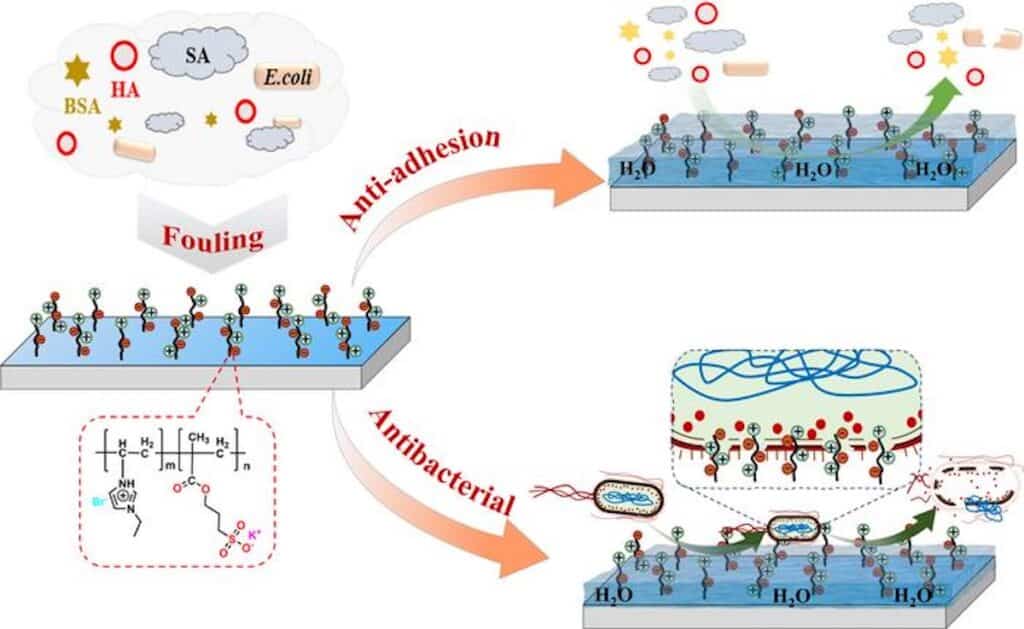A research team led by Professor Yinhua Wang from the Institute of Process Engineering (IPE) of the Chinese Academy of Sciences has developed a dual-functional reverse osmosis (RO) membrane with enhanced antibacterial and antiadhesion properties.
The membrane demonstrates broad-spectrum, sustained antibacterial activity and resistance to various foulants. These properties make it suitable for water purification, seawater desalination, and high-salinity wastewater treatment, among other applications.
The findings were published in the Journal of Membrane Science on January 6.

Diagram of antifouling mechanism of the SMP-IL membrane. Image: LANG Mingjiao
A key challenge in RO technology is the increased energy consumption and operational costs caused by membrane fouling. This fouling typically arises from organic adsorption, inorganic precipitation, and microbial growth, with biofouling accounting for over 45 per cent of the problem. The rapid proliferation of microorganisms and the challenges associated with effective removal through pretreatment contribute to this issue.
The researchers prepared a dual-functional RO membrane with excellent antibacterial and antiadhesion properties to address this challenge by grafting ionic liquid and sulfonic acid monomers onto the membrane’s surface using simple redox radical polymerization.
This innovation overcomes the “trade-off” effect, increasing flux without compromising salt rejection. The membrane’s improved hydrophilicity, smoother surface, and reduced surface charge help it resist fouling from bovine serum albumin, humic acid, and sodium alginate.
Meanwhile, the membrane also demonstrated good antibacterial activity against E. coli and S. aureus, thanks to the antibacterial properties of the polyionic liquid segments.
“Our membrane shows higher treatment flux and a lower flux decline rate in tap water purification compared to a commercial RO membrane. After alkaline washing, the membrane flux can also be completely restored and maintain a bactericidal rate of 99.8 per cent against E. coli,” said Dr. Xiangrong Chen of IPE, corresponding author of the study.
In summary, this research can potentially improve the efficiency of RO systems, thereby contributing to more effective and sustainable water treatment solutions.
 Search
Search




 京公网安备110402500047号
京公网安备110402500047号